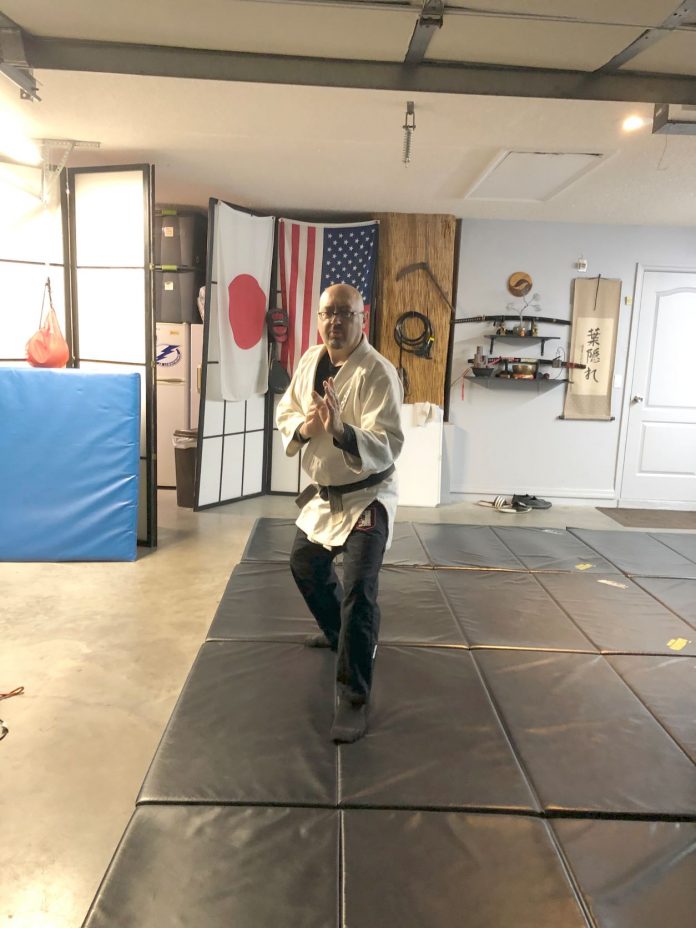Local ‘Sensei’ offers free martial arts classes that foster discipline, agility, and mental alertness
Those who are skilled in combat do not become angered, and those who are skilled at winning do not become afraid,” said the famous philosopher, Zhuge Liang. “Thus, the wise win before they fight, while the ignorant fight to win.”
The Japanese martial art, aikido, can be represented in those words,” said Joe Lotrecchiano, founder of the Hagakure Aikibudo dojo in Spring Hill.
Wearing his white karategi, his uniform tied with one the black belt he earned, he bows.
“Aikido is the art of taking another person’s attack and neutralizing its effectiveness by redirecting it in a peaceful and nonviolent way,” he said.
Lotrecchiano is a Black Belt with more than 20 years of martial arts experience and training. He has been offering completely free martial art classes to adults and teens at his Hagakure Aikibudo dojo since 2009. He says offering free classes is his way of ‘paying it forward’ to his community.
He and another enthusiast had been training for 3 years when they decided to take on students — not for monetary gain but as somewhere for them to develop martial arts skills.
“It took me a long time to achieve my Black Belt,” he said. “I don’t want to teach how to fight, I want to teach how to defend. It also needs to be fun, somewhere to learn etiquette, and something to improve your health and wellbeing,” he said. “My type of training allows for people of all ages, sizes, and shapes to enjoy the benefits of a healthier mind, body, and spirit through aikido.”
Lotrecchiano said, “Aikido is all about harmony of the mind and the body. Not about beating the other person, but getting better together. It can improve balance since aikido moves require people to use both the left and right sides of their body.”
Lotrecchiano combines different forms of martial arts with his own ideas, including spiritual discipline, and his ultimate goal is to “strive for personal perfection” through discipline and training.
A dojo is a school or hall for learning or meditation traditionally in the field of martial arts. The term literally means “place of the way” in Japanese. It’s a place where the instructor and the student incorporate a sense of discipline through politeness, respect, and other moral values, which develop one’s personality.
Lotrecchiano’s dojo is based in a large garage at his home in Spring Hill and conforms to a traditional Japanese dojo.
It’s spartan and free of distractions and extraneous materials. The floor is completely covered in soft wrestling mats and the walls are fitted with a variety of wooden sticks, including Bo staffs, specifically designed for safe weapon practice in different martial arts from around the world.
In pride of place is Lotrecchiano’s personal katana. A katana is a Japanese sword characterized by a curved, single-edged blade designed to be held with two hands. Katanas are the swords used by samurai in feudal Japan and are worn with the edge facing upward.
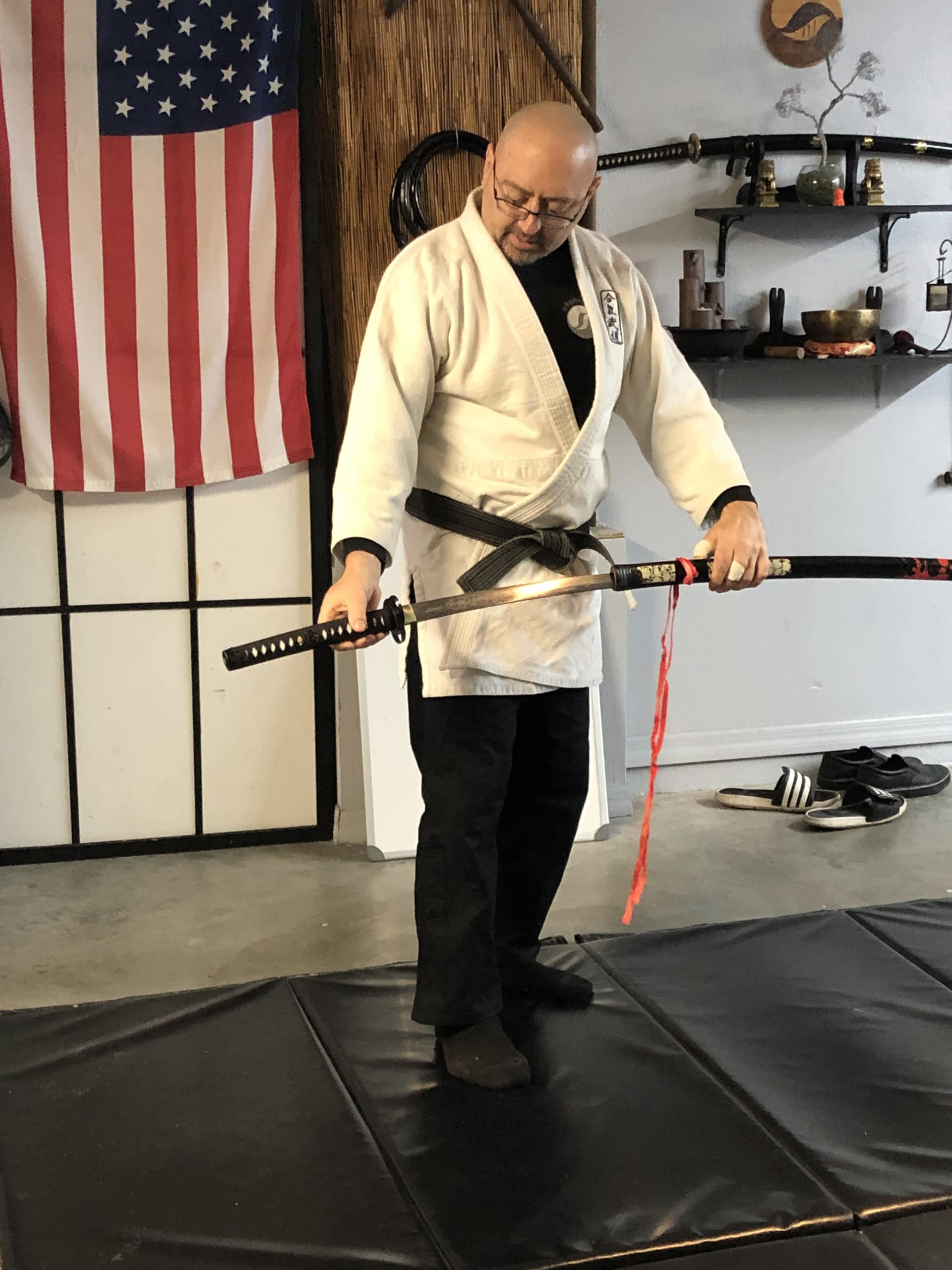
Lotrecchiano also produced his “hakama.” The hakama is tied at the waist and falls approximately to the ankles. It is worn over a kimono specially adapted for wearing the hakama. Hakama, especially those for martial arts, has seven deep pleats, two on the back and five on the front. Lotrecchiano explained it is important to fold and store hakama correctly to prevent damage and prolong the life of the garment, especially those made of silk.
Everything else in the garage is hidden behind beautiful white shoji screens that Lotrecchiano made himself.
A traditional Japanese dojo is considered very special and has to be well-cared for by its users. Rituals like regular cleaning, bowing, and maintaining discipline are observed by his students.
Lotrecchiano is referred to by his students as “sensei” – a teacher or “a person born before another.” A sensei is well respected and experienced in body control and manipulation.
“Even when we think we’ve got the technique right, Sensei comes by and shows us that there is still some little thing that we are either doing wrong or could do better,” said one of his students.
As students begin entering the dojo – always from the left corner – they greet the instructor by bowing and saying ‘Osu!” Fellow students are also greeted with a traditional bow. This is a sign of respect and a reminder of our constant involvement in relationships with others.
Shoes are never worn in the dojo area and are placed neatly in the racks provided for them. Instructors’ shoes facing inwards and students facing outward.
Students at Hagakure Aikidobudo do not need to initially wear a “gi,” the traditional uniform for practicing martial arts but they are required to wear the dojo’s uniform T-shirt and belt, as well as pants that go past their knees to avoid rub burns from the mat. T-shirts cost $10 and a belt is $5. Classes run for an hour and a half.
“Students can train barefoot or in socks,” said Lotrecchiano. “I want to make it very comfortable for them to train.”
One of his students, Tracy Sacks, is Lotrecchiano’s first female black belt. Another, Neil Ball, is now testing for a black belt too. “It takes many years to achieve but he is ready,” said Lotrecchiano.
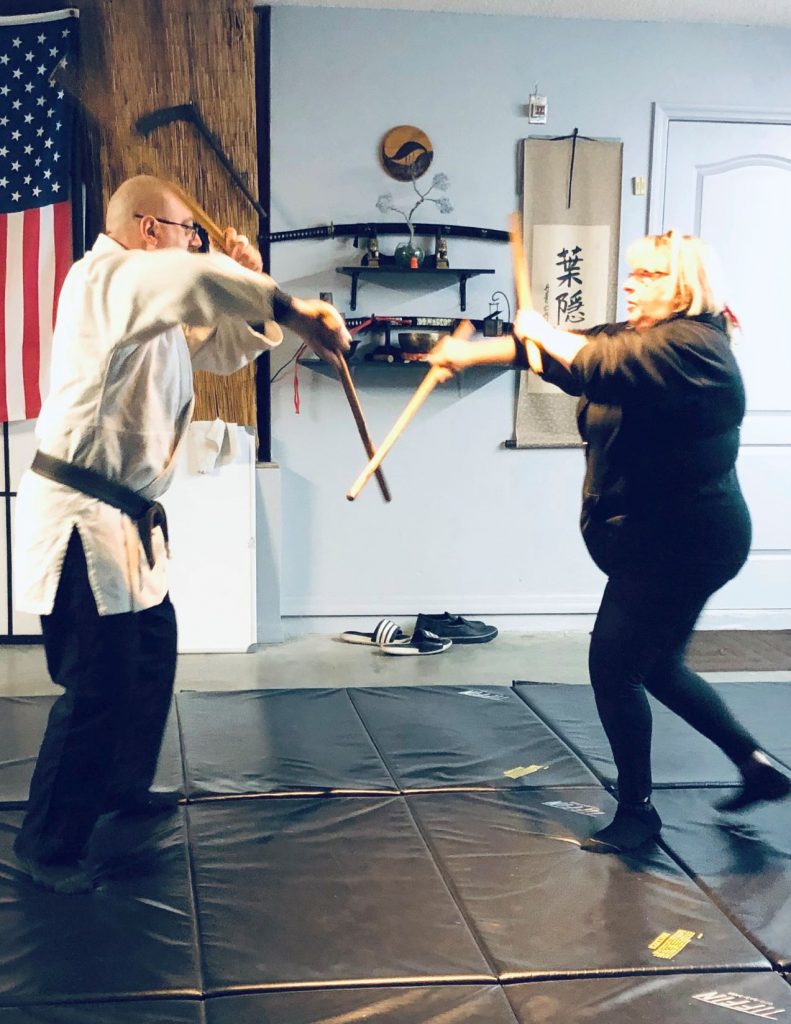
“I’m here to learn something new while developing myself further as a martial artist,” Sacks said. “I am looking forward to a new role leading a women’s self-defense class.”
Lotrecchiano added, “In addition to the self-defense classes, we will also be offering classes for teens 12 to 16 years old on Saturday mornings which will give them a chance to come here and train for free.”
Student Ken Carr said he enjoys aikido because “it’s a healthy sport and has helped him on one recent occasion when confronted by several bullies. I was able to avoid injury simply because I knew how to move.”
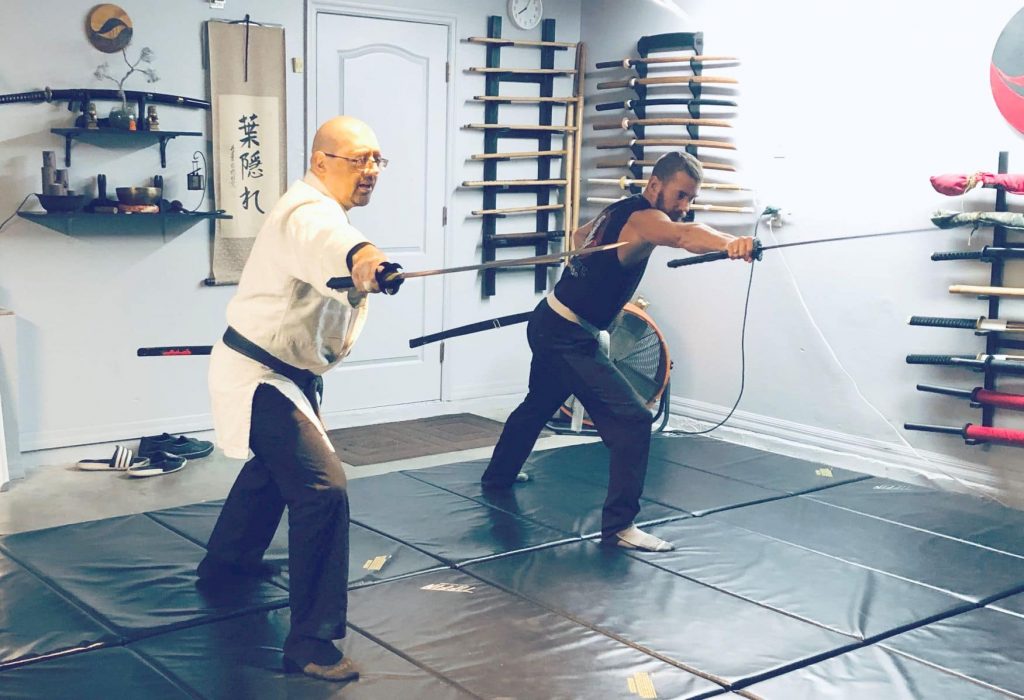
He liked the fact that aikido is not about attacking, but about self-defense and using opponents’ strength against them. In addition to the exercise, Carr said he also has found that the classes offer him a cultural experience that helps him learn more about Japan.
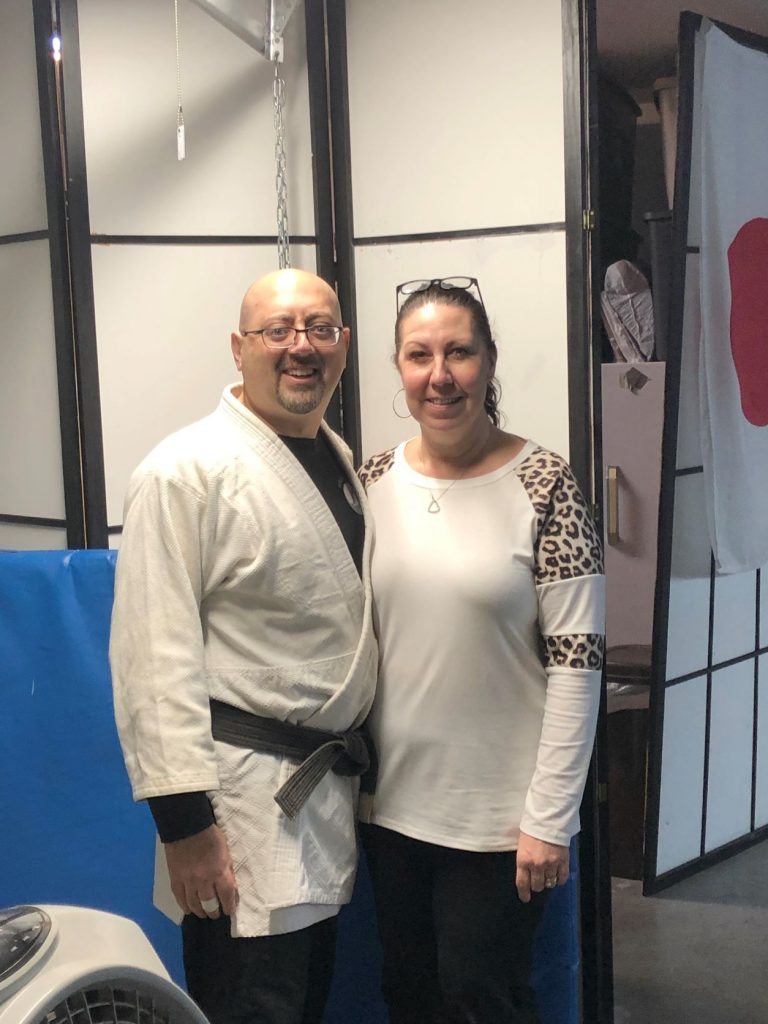
One of the biggest things that I love about this class is that everyone is nice, caring, funny, and understanding,” Lotrecchiano said. “We all come together to learn and be stronger, healthier, and positive adults.”
“It’s not about strength, it’s not about moving; it’s about working together, so when we step on the mat, we are basically the same — no rank, nothing, except for the sensei, and you listen to the sensei for teaching,” he added.
For those who want to learn, Lotrecchiano offers classes at convenient times. He offers free classes every Tuesday, Thursday and Sunday and includes Technique and Weapons Training, Self-Conditioning, Bully Prevention, and Women’s Self-Defense.
In the coming months, in addition to the teen classes, Lotrecchiano will also be rolling out the Women’s Self Defense class led by Tracy Sacks.
For more detailed information about classes, visit http://aikibudo.weebly.com.
Coronavirus regulations are in place.
Contact Information
Training classes at the Aikibudo school are completely FREE and serve both as a try-out and a preparatory class.
Phone
Joseph Lotrecchiano
352.428.7739
Email
[email protected]
Website
Aikibudo.weebly.com

